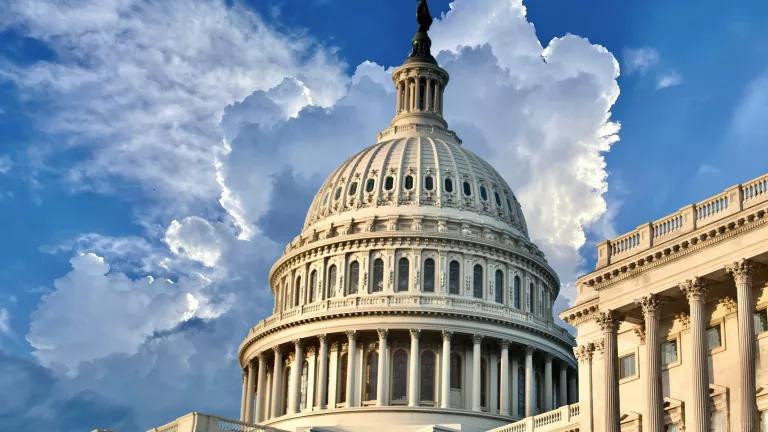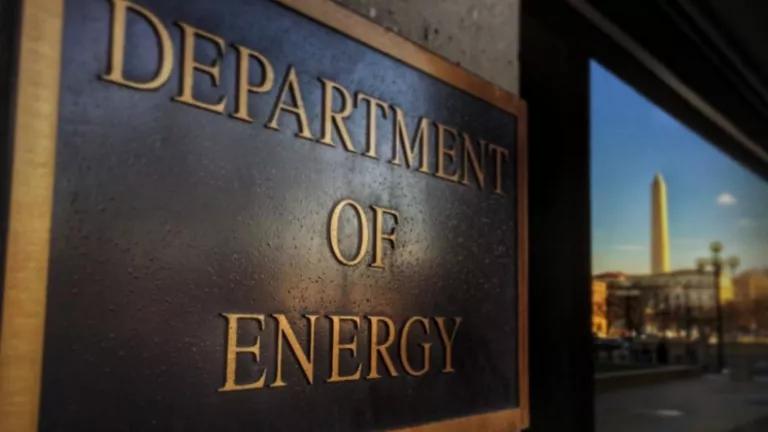Key Takeaways from PA's New RGGI Analysis

New power sector modeling from the Pennsylvania Department of Environmental Protection (DEP) shows that by joining the Regional Greenhouse Gas Initiative (RGGI), Pennsylvania can slash power sector carbon pollution while generating hundreds of millions of dollars every year for job-creating clean energy projects.
As NRDC's own modeling has shown, Pennsylvania can cut pollution even further, do so more cost-effectively, and create more family-sustaining jobs by combining carbon limits with strong policies to drive energy efficiency projects for homes and businesses (such as Act 129) and local renewable energy projects (such as the Alternative Energy Portfolio Standards Act, or AEPS).
Fossil fuel apologists who have long opposed RGGI for other reasons now say the DEP should stop its work on a carbon limits regulation for the power sector because of COVID-19. That would be a major mistake and setback, however, because the DEP's modeling results show that RGGI can not only help clean up Pennsylvania's air, but also provide the state with new funds to help rebuild its economy through new clean energy investments.
Modeling 101
As my colleague Amanda Levin and I discussed in a blog last year, power sector "modeling" refers to the use of complex computer programs to forecast the environmental and economic effects of energy policies.
The DEP worked with the consulting firm ICF to model the effects of Pennsylvania's participation in RGGI and using ICF's Integrated Planning Model (IPM®), a tool commonly used by federal and state regulators, electric power companies, and non-profits like NRDC.
The DEP’s modeling uses extensive real-world information about our nation’s power sector and the policies that govern it, along with assumptions about electricity demand, fuel costs, and other factors to build a virtual electric grid that operates at lowest cost while reliably meeting the energy needs of U.S. homes and businesses.
Modeling Scenarios Presented by the DEP
Yesterday the DEP presented the results of two IPM analyses, or “cases,” to its Air Quality Technical Advisory Committee (AQTAC) and Citizens Advisory Council:
- a "reference " or "business-as-usual" case in which Pennsylvania follows its current energy policies without adopting carbon limits; and
- a "policy case" in which the state participates in RGGI with a carbon dioxide "budget" that starts at 78 million tons in 2022, then ratchets down by 3 percent annually (in accordance with the RGGI Model Rule for the regional cap), reaching 58 million tons in 2030.
After the presentation, the DEP posted on the AQTAC website a complete proposed RGGI regulation based on the results of these runs.
The DEP's Results
According to the DEP’s modeling:
- Without RGGI, Pennsylvania is likely to see a modest decrease in carbon pollution from power plants over the next ten years, from about 75 million tons in 2020 to 60 million tons in 2030. This drop in emissions is due to significant retirements of coal plants in Pennsylvania, as these aging plants face continued economic pressure from plants using cheap fracked gas. NRDC's 2019 reference case also identified similar economic pressures for the state’s coal fleet, but projected that power sector emissions would actually increase slightly over the next decade without RGGI as cheaper gas plants out-competed not only coal, but also non-emitting nuclear plants. In either case, it's clear that most of Pennsylvania's coal fleet will soon be replaced by gas for economic reasons, whether or not Pennsylvania adopts carbon limits.
- By participating in RGGI, Pennsylvania would achieve deeper cuts in carbon pollution. The DEP’s modeling projects that if Pennsylvania participates in RGGI with a carbon budget that declines from 78 million tons in 2022 to 58 million tons in 2030, emissions from the state’s power plants would would actually fall further—to about 50 million tons in 2030—and Pennsylvania would cut a total of 180 million tons between 2022 and 2030, compared to the no-RGGI reference case. Because RGGI participation will drive actual emissions below the state's budget, Pennsylvania could sell those excess pollution allowances to power plants in other RGGI states.
- Pennsylvania would receive hundreds of millions of dollars per year from the auction of carbon allowances. The DEP's presentation didn't focus on what Pennsylvania would likely receive in proceeds from carbon allowance auctions, but data posted on its website suggest that allowance prices will average around $6 per ton of CO2 between 2022 and 2030. Even if prices turn out to be lower (and if Pennsylvania invests proceeds into energy efficiency and renewable energy, they likely would be) Pennsylvania will still receive hundreds of millions of dollars annually for its Clean Air Fund. By law, proceeds in that fund must be used to eliminate air pollution; that means using them to fund energy efficiency, renewables, and other clean energy projects that will help lower energy bills and put people to work.
- The effect of RGGI on wholesale power prices will be small and can be mitigated through investments in clean energy. Because Pennsylvania has a "restructured" or "deregulated" power sector, the bills paid by electricity consumers consist of both generation charges (which cover the costs of operating power plants and high-voltage transmission lines) and distribution charges (which cover local poles, wires, and substations). Consistent with past modeling by NRDC and Resources for the Future, the DEP's modeling found that joining RGGI will lead to a very small increase in generation charges—about 3 percent, or 0.1 cents per kilowatt-hour. That equates to less than a dollar per month for the average Pennsylvania household. And as the DEP noted today, investments in energy efficiency can mitigate that impact. Lowering consumption can lower bills, even if rates increase slightly. In the states already participating in RGGI, investments under the program have helped save consumers more than a billion dollars on their energy bills thus far.
Pennsylvania Needs to Use All the Tools in the Climate and Clean Energy Toolbox—Not Just RGGI
Modeling by NRDC has consistently found that carbon limits alone will not create a vibrant clean energy economy in Pennsylvania. For that to happen, the Commonwealth must also invest in programs that cut energy waste from its homes, businesses, and factories, and expand the build-out and use of renewable energy sources like wind and solar power. In other words, Pennsylvania needs to use all the policy tools it has at its disposal.
Practically speaking, this means that in addition to joining RGGI, Pennsylvania must expand its efficiency programs by updating Act 129 of 2008 and increase renewable energy generation by updating the Alternative Energy Portfolios Standards (AEPS) Act of 2004. We hope the General Assembly will soon show some interest in doing these things. (It hasn't since the shale boom started more than a decade ago). In the meantime, a cap-and-invest program like RGGI is the Wolf administration’s best opportunity to invest in clean energy projects under its existing legal authority, and to help Pennsylvania build a post-pandemic clean energy economy.



